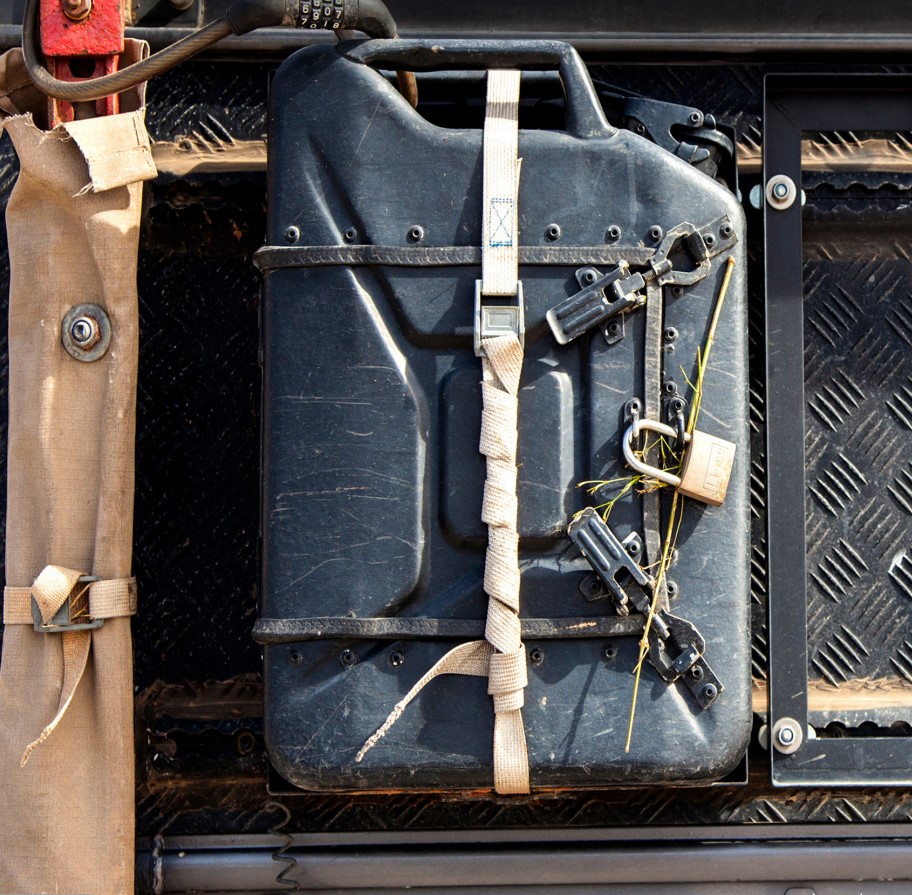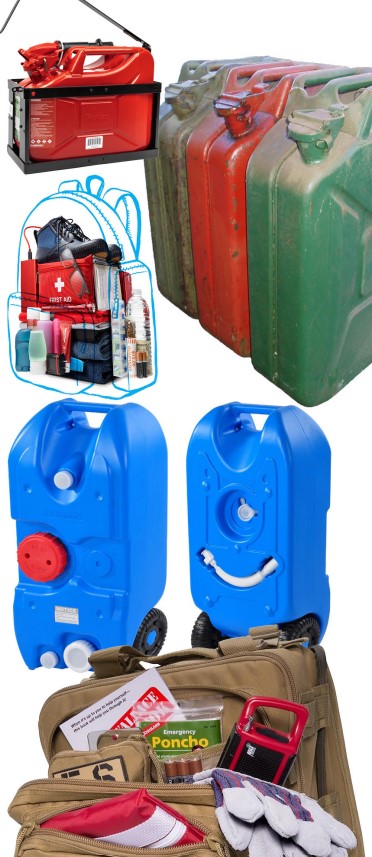The time has come. You have to leave your home location and get out on the road. Your bags are packed, the map is folded, all hands and arms are inside the vehicle, and away you go on your adventure. But wait, how far do you need to travel? What is the range of your fuel tank? More importantly, what is the range of your passenger’s bellies?
Just as survival can be measured by calories in vs. calories out, your vehicle runs on a consumable fuel as well. So how do you plan for your future fuel consumption? Many bug-out plans will say to try and keep your retreat location within the driving distance of roughly one tank of fuel. Why? Because you won’t always be able to count on having a gas station or rest stop along the way.

While that idea has its merits, it’s also not realistic for many people. First, while we can plan for a set retreat location, we may not have the ability to get there based on the disaster. Second, different vehicles have different fuel ranges, and you may not be in your originally planned vehicle. For example, if you planned on taking your truck with a fuel range of 600 miles, but you’re stuck in a “borrowed” sedan with a range of only 350 miles, that may become a problem.
Another consideration of resupply planning is to account for differing vehicle capabilities. If you plan to take multiple vehicles, it would be wise to calculate your supplies based on the one with the most needs or shortest range.
To make matters worse, if you find yourself sitting in gridlocked traffic at an idle, you are burning up that precious fuel.
Quick research indicates that a typical engine can burn roughly one gallon per hour of idling. This should be added to your
fuel needs calculations. It would not be unrealistic to find yourself creeping along on a highway at idle speeds for many hours during an event. Simple math says that at one-gallon fuel consumption per hour of idling for eight hours equals eight gallons of fuel. If the average pickup truck makes roughly 16 MPG, we would theoretically lose 128 miles of traveling range in that leg of the journey alone. (1gal. / 1hr. x 8hrs @16 mpg = 128 miles lost range.)
The old saying that your mileage may vary is appropriate here. PLANNING FOR EVACUATION IS NOT MUCH DIFFERENT THAN PLANNING FOR A VACATION ROAD TRIP. If you know what your vehicle can do, you can figure out the cost and roughly where you’ll need to resupply along the way. It has been said that in the early days of Interstate highways, clever businessmen would drink coffee and drive until they needed to use the bathroom. When they felt the need to stop, they would buy the land and build a gas station with a convenience store.
That’s all well and good for simple travel, but during a true mass evacuation, we can’t count on there being convenient FUEL and FOOD available. In such cases, it would be wise to do the math and carry as much fuel as would be needed, and more would be better. The most obvious way to transport fuel is in the ubiquitous red plastic can, but there could be some drawbacks to that.

First of all, safety; we never want to carry liquid fuel in the passenger compartment of a vehicle, and that includes the trunk. Gas cans are notorious for leaking, and the liquid is not the most dangerous part, the combustible vapors are. When fuel gets warm, it expands, and pressure builds up. Most cans are not equipped to hold that pressure in without off-gassing somewhat. The plastic cans, especially the new government versions, will swell up like a balloon making them unstable to store in hot environments.
The other danger with red gas cans is that they are obviously gasoline. The attentive and desperate refugee that sees you carrying a half dozen red gas cans strapped to the top of your car may become a security threat to your family when he attempts to rob you of the precious fuel on the road somewhere. The last thing you need while idling in gridlock is a fight over your gas cans.
While federal law says that fuel must be stored in approved containers, you may want to think outside the box and find a way to camouflage the containers as something else in a true crisis situation. Perhaps use the same durable cans but use a different color like blue or yellow. Maybe stencil a label that says something like WATER, KEROSENE, or even USED FRY OIL to throw people off. Keep in mind that if someone sees you refilling with a mislabeled can, your cover will be blown, so keep it on the down low.
The other items we need to consider for resupply are food and water. The purpose of bugging out is to get out of dodge, and stopping in other populated areas could be dangerous. Since safety and security are prime considerations in a vehicle bug-out, it would be wise to keep all bags packed, zipped, buckled, and near the doors for a quick escape. Some stops are hard to avoid, such as the bathroom break, although there are ways to work around that with certain travel potty products.
Long rides mean potentially missed meals and possibly dehydration. There are many nutrition options available to the traveler these days, from protein bars to MREs that can be eaten cold if needed. When planning for your bug-out scenarios, take this into consideration. If you don’t, there could be some hangry passengers onboard. Think about how you are going to get at least 1200 calories into each passenger per day, if not more, and do that without taking it from a well-packed bug-out bag.
Your passengers will need water too. The formula for proper hydration is at a minimum, one ounce of water per pound of weight multiplied by .55 (1oz.per Lb. Body weight x.55= daily water intake in ounces). For example, a 200-pound person should drink approximately 110 ounces of water. That is almost one gallon per day and more if the workload and weather require it.
BUGGING OUT IS ESSENTIALLY AN EVACUATION TO SAFETY. Try to plan your evac routes to avoid potentially dangerous areas while keeping you near the necessities in case of an unplanned breakdown or emergency. Part of your travel plan should be your loadout, and things that get used up need to be high on your packing and resupply list. There should also always be a Plan “B.” If you break down or somehow lose all of your supplies, how will you continue the mission? Before you begin your vehicle journey, think about what would happen if you had to walk. Does your route take you past reliable food and water sources? Do you have an alternate way to carry water, food, or even an injured person to the next resupply stop?
THESE ARE ALL THINGS THAT NEED TO BE CONSIDERED BEFORE YOU LEAVE THE DRIVEWAY.
